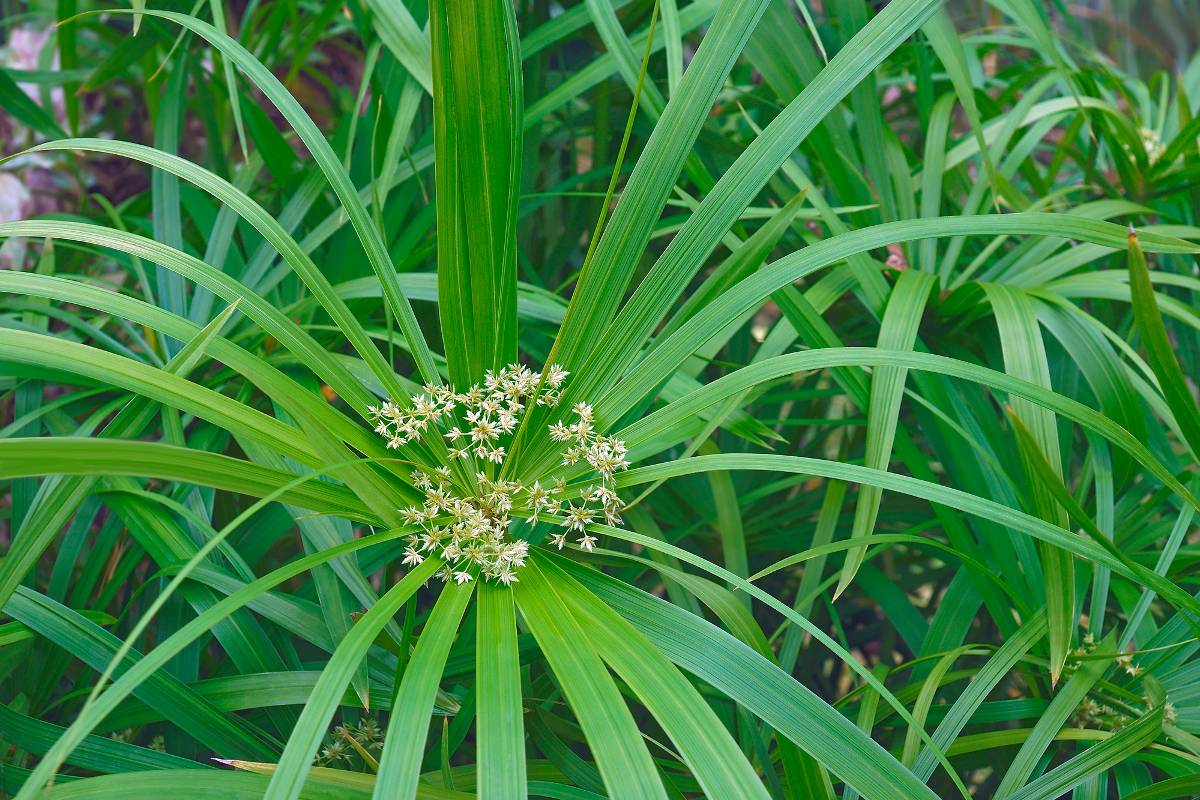If you’re looking for new additions to your garden, these flowers that start with U could be right for you, pun completely intended!
These blooms, some well-known and others a hidden gem in the world of horticulture, offer a unique charm, a splash of color, and a touch of nature’s artistry. Whether you’re a seasoned gardener or simply someone who revels in the enchantment of the natural world, join us as we dive into the beauty and diversity of these flowers that start with the letter U, uncovering their distinctive characteristics and the wonder they bring to our gardens and landscapes.
List of Flowers That Start with U
- Umbrella Plant (Cyperus alternifolius)
- Uva Ursi (Arctostaphylos uva-ursi)
- Umbrella Thorn Acacia (Vachellia tortilis)
- Upland Rice (Oryza sativa)
- Unicorn Plant (Proboscidea louisianica)
- Umbrellawort (Tauschia arguta)
- Umbel-flowered Radiate (Helianthus schweinitzii)
- Urginea (Urginea spp.)
- Unicorn Lily (Proiphys amboinensis)
- Utah Serviceberry (Amelanchier utahensis)
- Upland Cotton (Gossypium hirsutum)
- Uva Ursi Bellflower (Campanula trachelium)
- Upland Ironweed (Vernonia glauca)
- Ursinia (Ursinia spp.)
- Upright Germander (Teucrium chamaedrys)
- Upstate Trillium (Trillium cuneatum)
- Umbrella-Leaf (Diphylleia cymosa)
- Upland White Aster (Symphyotrichum weilii)
- Upland Boneset (Eupatorium sessilifolium)
- Umbrella Magnolia (Magnolia tripetala)
- Uinta Basin Hookless Cactus (Sclerocactus wetlandicus)
- Ugly Fruit Flower (Citrus paradisi)
- Unicorn Plant (Proboscidea parviflora)
- Upright Prairie Coneflower (Ratibida columnifera)
- Urn Plant (Aechmea fasciata)
1. Umbrella Plant (Cyperus alternifolius)
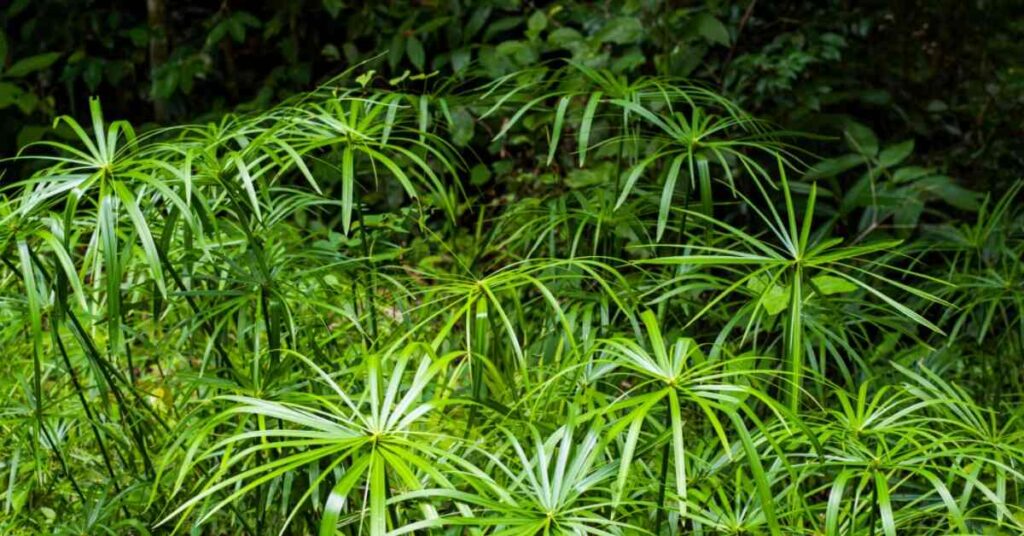
The Umbrella Plant, also known as the Umbrella Palm, is a water-loving plant with umbrella-like clusters of long, slender leaves. It is often grown as a houseplant or in water gardens.
- Watering Needs: Keep the soil consistently moist, or even submerged in water when used as a water garden plant
- Bloom Color: Umbrella Plant is typically grown for its foliage, and it produces small, inconspicuous brownish flowers
- Hardiness Zones: 10-11
- Mature Height: Up to 2-3 feet
- Bloom Time: Spring to summer (for the flowers)
- Sunlight Exposure: Full sun to part shade
2. Uva Ursi (Arctostaphylos uva-ursi)
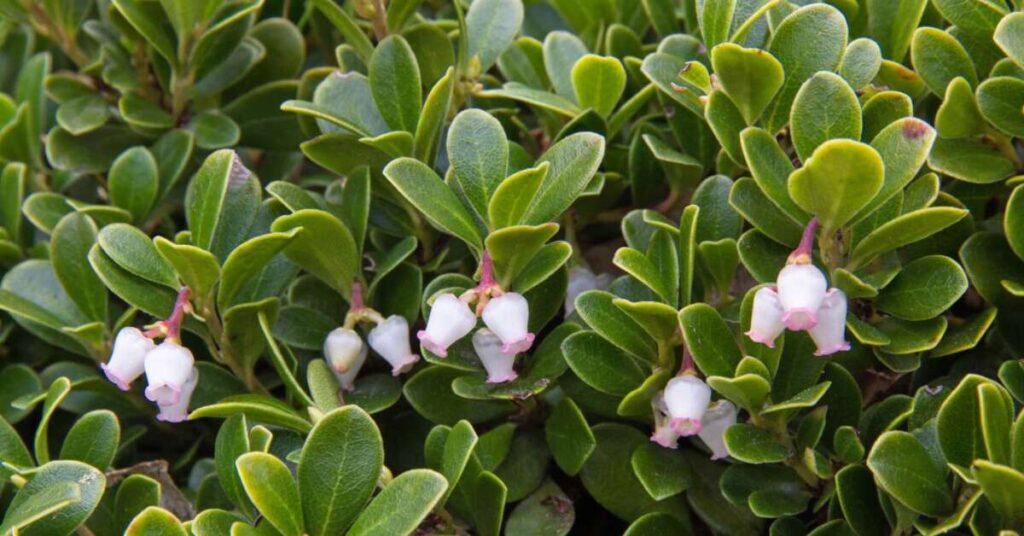
Uva Ursi, also called Bearberry, is a ground-covering plant with small, bell-shaped pink or white flowers. It’s known for its red berries and is used in traditional herbal medicine. They’re bee friendly too!
- Watering Needs: Keep the soil consistently moist but well-draining
- Bloom Color: Small, bell-shaped pink or white flowers
- Hardiness Zones: 2-7
- Mature Height: Ground-hugging, typically around 6 inches in height
- Bloom Time: Late spring
- Sunlight Exposure: Full sun to part shade
3. Umbrella Thorn Acacia (Vachellia tortilis)
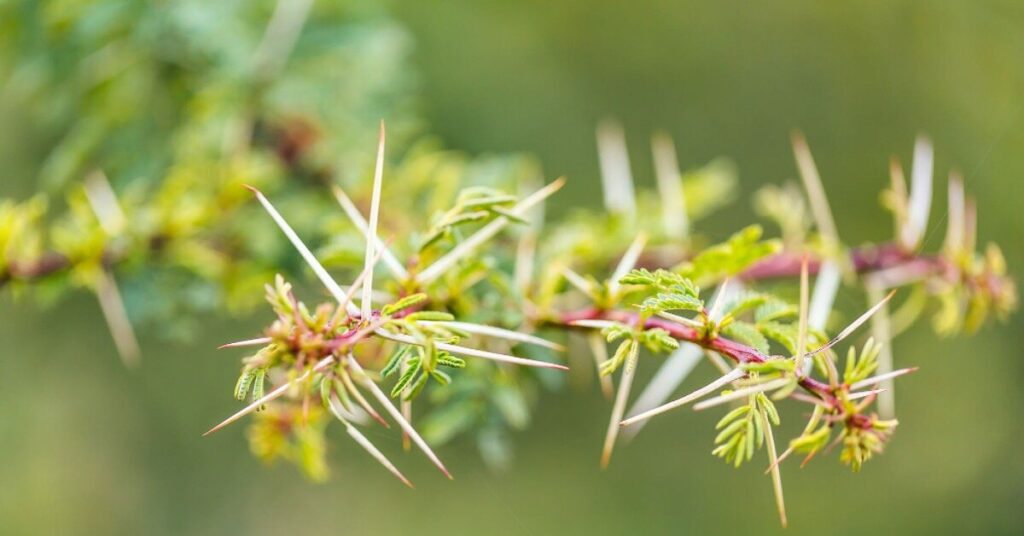
The Umbrella Thorn Acacia is a tree native to Africa. It produces spherical clusters of small, fragrant, yellow flowers and is a vital food source for wildlife.
- Watering Needs: Drought-tolerant once established, but occasional deep watering can help
- Bloom Color: Small, fragrant, yellow flowers in spherical clusters
- Hardiness Zones: 10-12
- Mature Height: Up to 20-30 feet
- Bloom Time: Spring
- Sunlight Exposure: Full sun
4. Upland Rice (Oryza sativa)
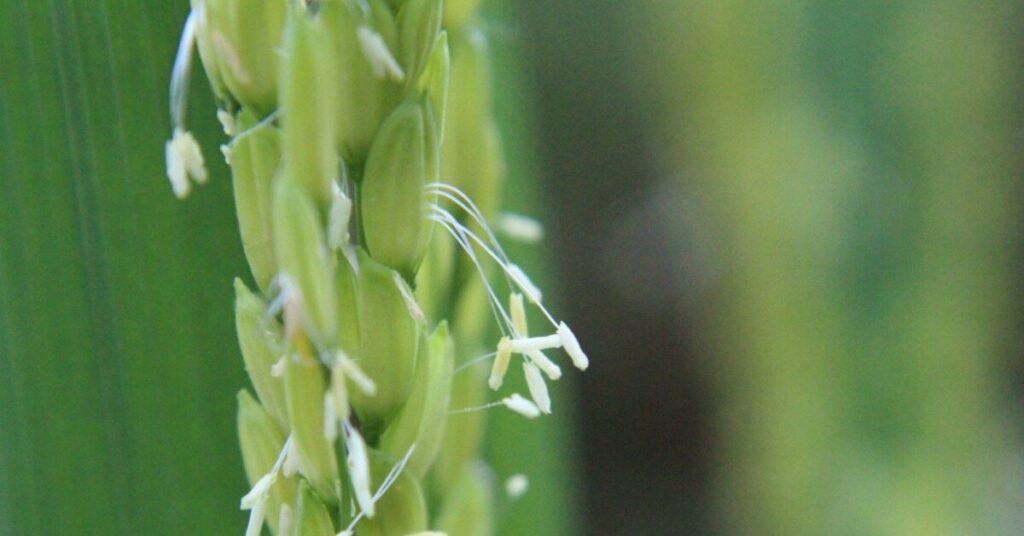
Upland Rice is a staple crop cultivated for its edible grains. While not primarily grown for ornamental purposes, its flowering stage is marked by clusters of small, greenish or purplish flowers. It’s a great way to add some biodiversity to the mix!
- Watering Needs: Upland Rice typically grows in flooded fields, requiring ample water for rice cultivation
- Bloom Color: Small and not primarily grown for ornamental purposes
- Hardiness Zones: Not applicable for ornamental use
- Mature Height: Varies based on cultivation practices
- Bloom Time: Not applicable for ornamental use
- Sunlight Exposure: Full sun
5. Unicorn Plant (Proboscidea louisianica)
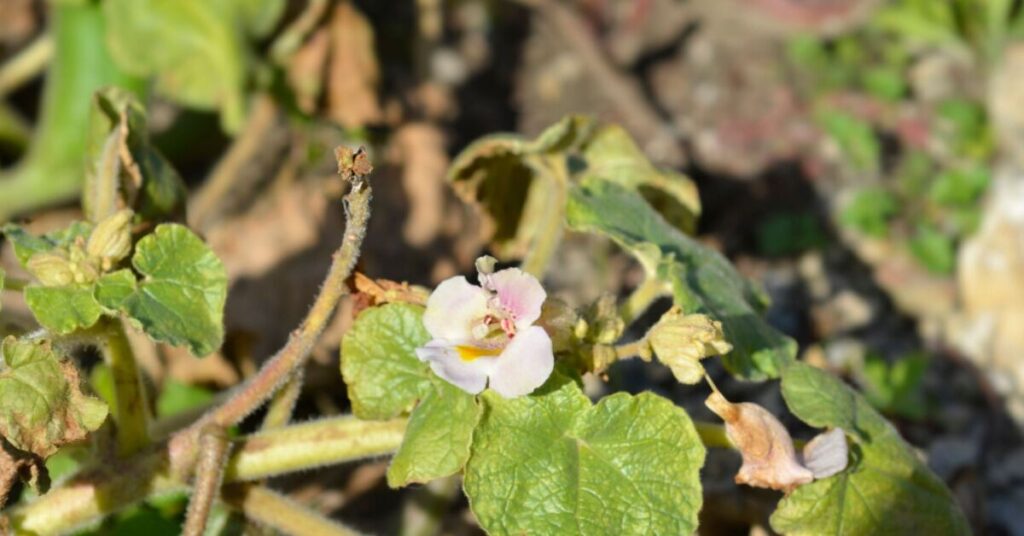
The Unicorn Plant, also known as Devil’s Claw, is a unique plant with long, horn-like seedpods that resemble unicorn horns. It produces striking, trumpet-shaped, white to purple flowers.
- Watering Needs: Moderate watering
- Bloom Color: Striking, trumpet-shaped, white to purple flowers
- Hardiness Zones: 8-11
- Mature Height: 1-3 feet
- Bloom Time: Summer to early fall
- Sunlight Exposure: Full sun
6. Umbrellawort (Tauschia arguta)
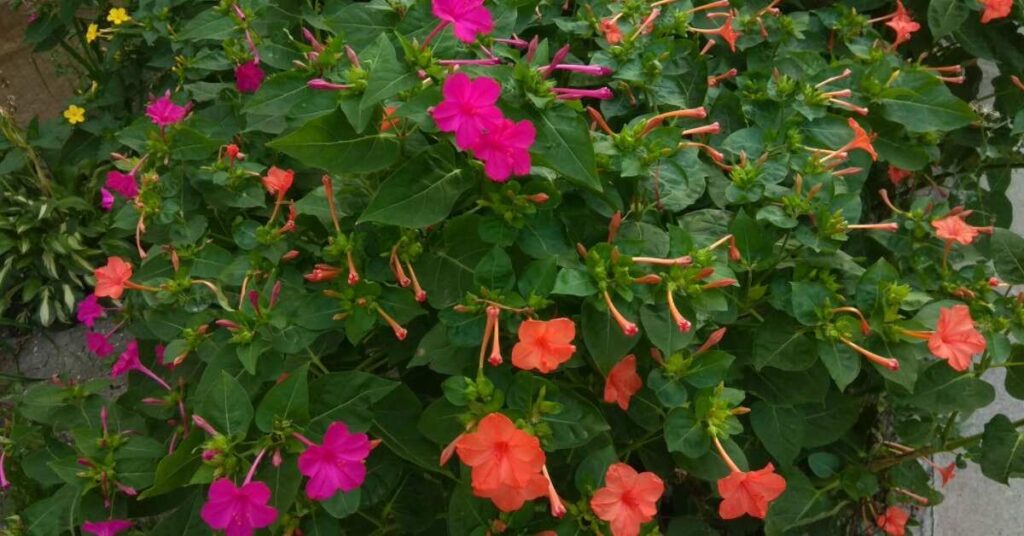
Umbrellawort is a wildflower found in North America, producing flat-topped clusters of small, white or pinkish flowers. It’s a favorite of pollinators and is commonly found in meadows and prairies.
- Watering Needs: Keep the soil consistently moist
- Bloom Color: Small, white or pinkish flowers in flat-topped clusters
- Hardiness Zones: 5-8
- Mature Height: 1-3 feet
- Bloom Time: Late spring to summer
- Sunlight Exposure: Full sun to part shade
7. Umbel-flowered Radiate (Helianthus schweinitzii)
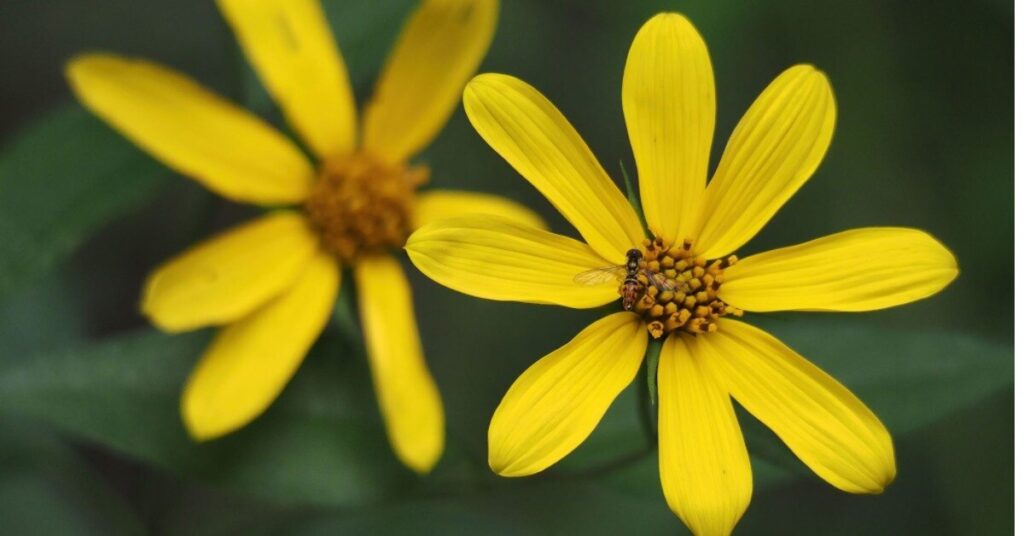
This sunflower species is native to North America and is named for its distinctive arrangement of yellow flowers in an umbrella-like shape. They’re great for the environment too!
- Watering Needs: Regular watering, especially during dry periods
- Bloom Color: Yellow flowers in an umbrella-like shape
- Hardiness Zones: 3-9
- Mature Height: Varies but typically around 3-6 feet
- Bloom Time: Summer to early fall
- Sunlight Exposure: Full sun
8. Urginea (Urginea spp.)
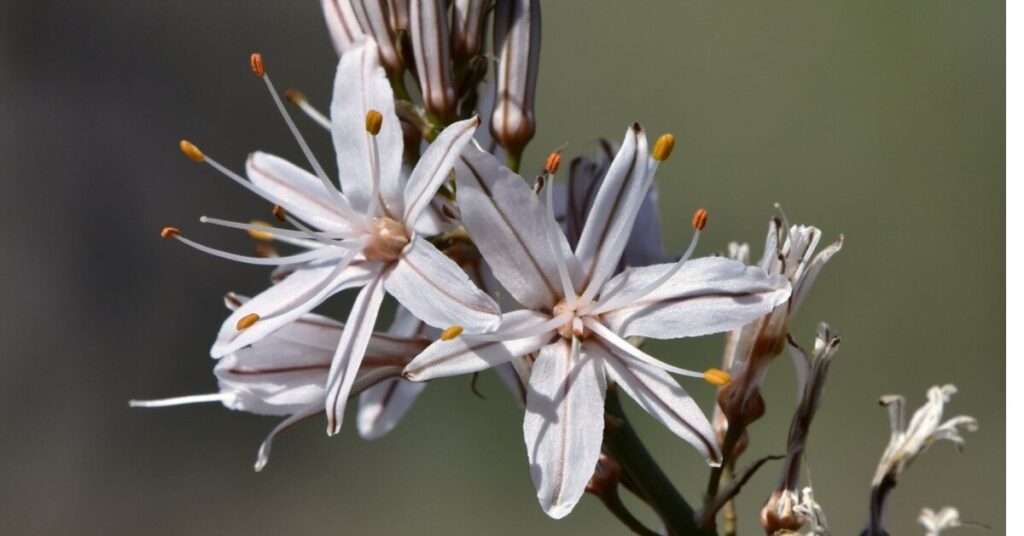
Urginea, also known as the Sea Onion or Red Squill, is a bulbous plant with tall, elegant spikes of white, star-shaped flowers. These unique flowers make it a sought-after ornamental species.
- Watering Needs: Keep the soil consistently moist
- Bloom Color: Star-shaped flowers in white or pale pink
- Hardiness Zones: Varies by species
- Mature Height: Varies by species
- Bloom Time: Summer to early fall
- Sunlight Exposure: Full sun to part shade
9. Unicorn Lily (Proiphys amboinensis)
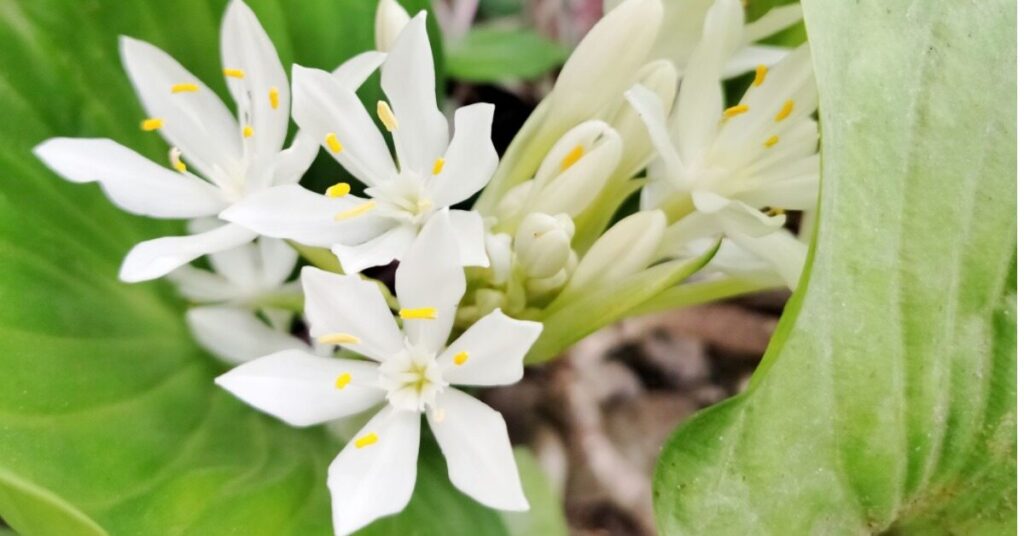
The Unicorn Lily is an exotic bulbous plant native to Australia and the South Pacific. It produces striking, trumpet-shaped, white or pale pink flowers that are often fragrant.
- Watering Needs: Keep the soil consistently moist
- Bloom Color: Striking, trumpet-shaped, white or pale pink flowers
- Hardiness Zones: 10-12
- Mature Height: 12-18 inches
- Bloom Time: Summer
- Sunlight Exposure: Full sun
10. Utah Serviceberry (Amelanchier utahensis)
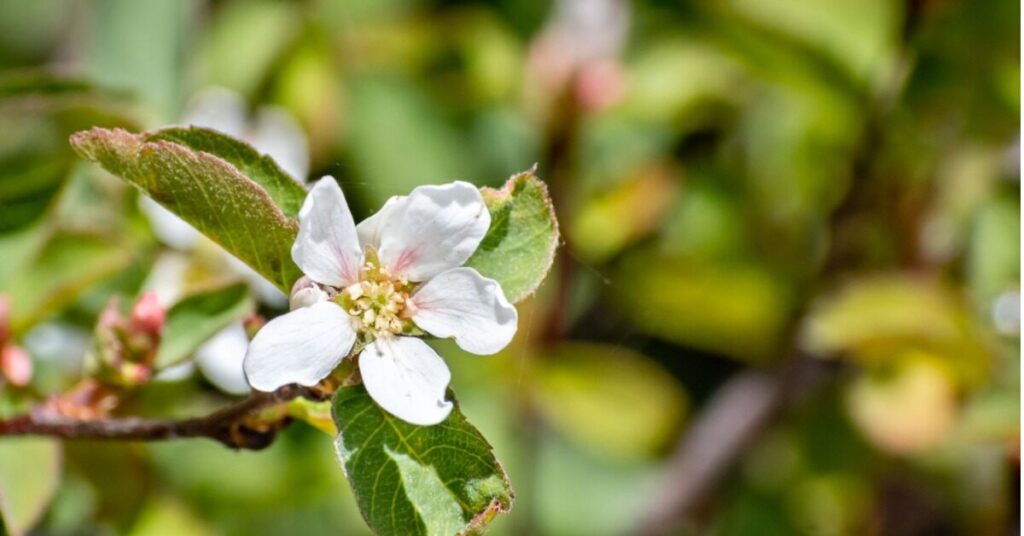
The Utah Serviceberry is a deciduous shrub native to the western United States. It produces clusters of small, white or pinkish flowers and edible berries.
- Watering Needs: Regular watering, especially during dry periods
- Bloom Color: Small, white to pinkish flowers
- Hardiness Zones: 4-8
- Mature Height: 3-10 feet
- Bloom Time: Spring
- Sunlight Exposure: Full sun to part shade
11. Upland Cotton (Gossypium hirsutum)
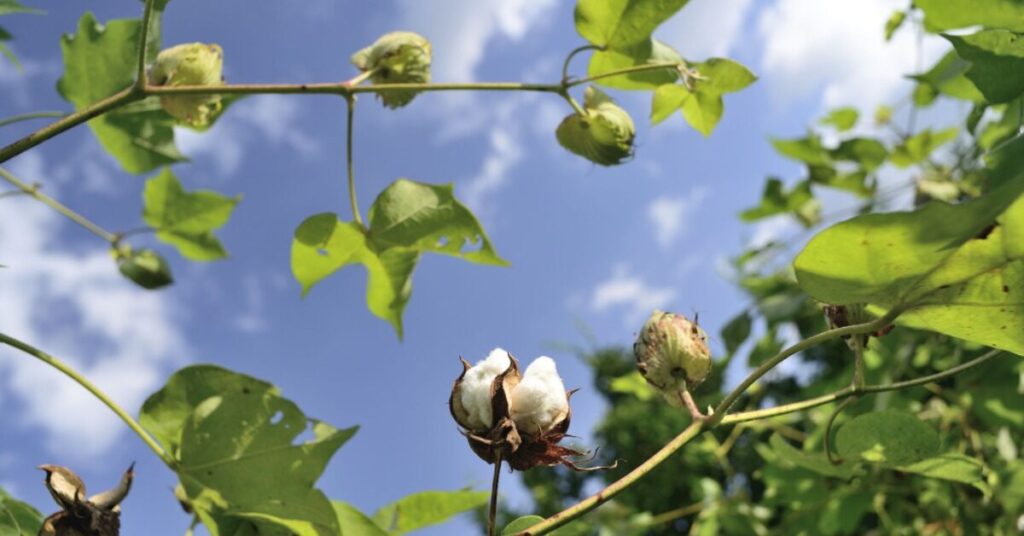
Upland Cotton is a significant crop known for its fluffy, white fibers that are spun into cotton fabric. The plant produces creamy-white to yellow flowers that eventually give way to cotton balls.
- Watering Needs: Consistent moisture during the growing season
- Bloom Color: Creamy-white to yellow
- Hardiness Zones: 8-11
- Mature Height: Typically 3-6 feet
- Bloom Time: Summer
- Sunlight Exposure: Full sun
12. Uva Ursi Bellflower (Campanula trachelium)
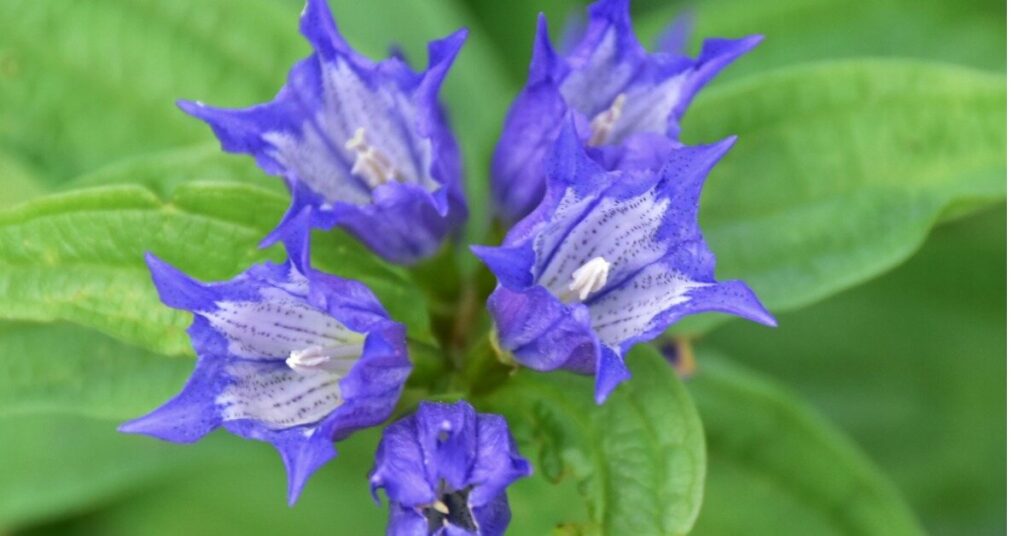
The Uva Ursi Bellflower is a perennial plant known for its clusters of bell-shaped, lavender or blue-violet flowers. It’s a favorite among gardeners for its attractive blooms. It’s a great addition to any backyard patio!
- Watering Needs: Keep the soil consistently moist
- Bloom Color: Lavender or blue-violet
- Hardiness Zones: 3-8
- Mature Height: 2-3 feet
- Bloom Time: Summer
- Sunlight Exposure: Full sun to part shade
13. Upland Ironweed (Vernonia glauca)
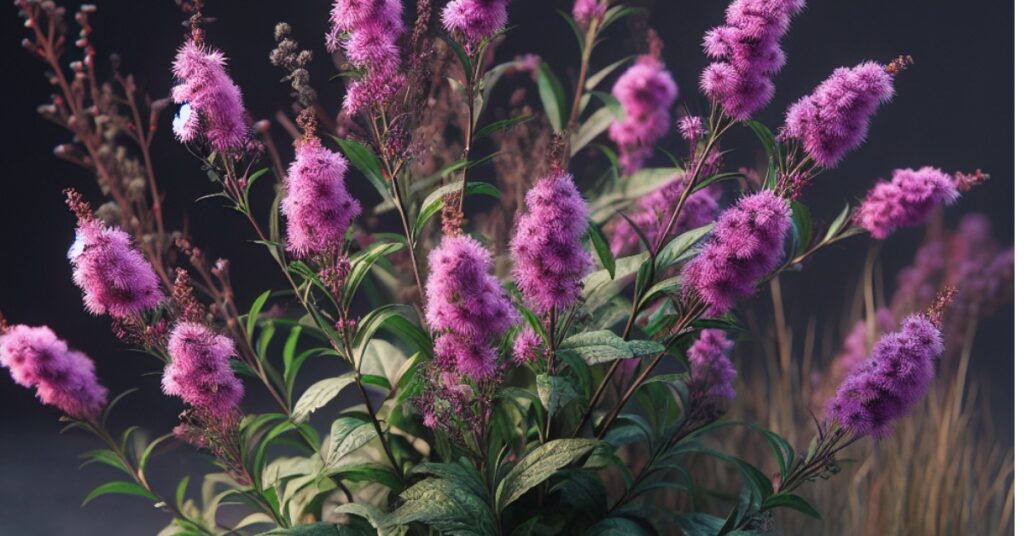
Upland Ironweed is a native wildflower in North America. It produces clusters of small, purple to lavender flowers, attracting butterflies and bees to the garden.
- Watering Needs: Keep the soil consistently moist
- Bloom Color: Small, purple to lavender
- Hardiness Zones: 6-9
- Mature Height: 2-4 feet
- Bloom Time: Late summer to early fall
- Sunlight Exposure: Full sun to part shade
14. Ursinia (Ursinia spp.)
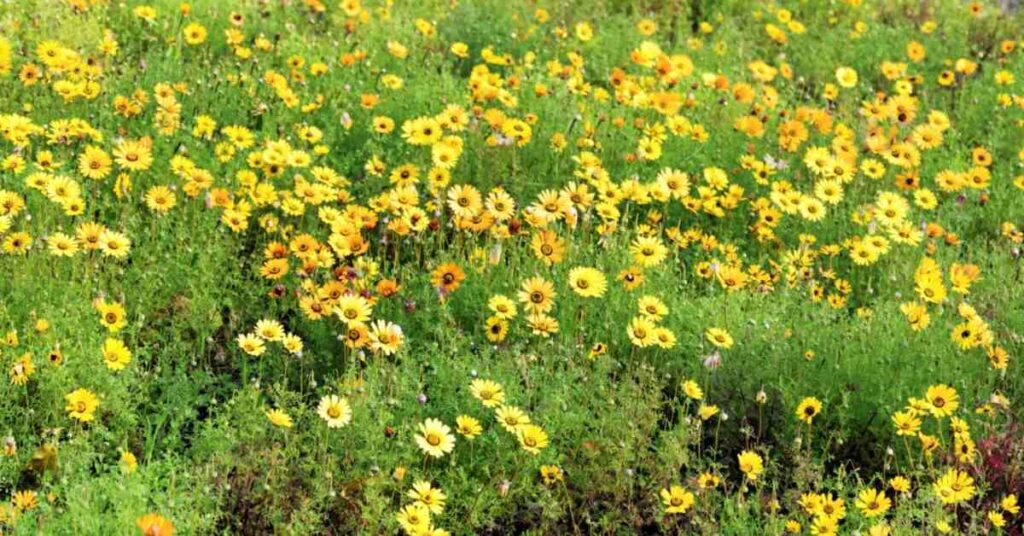
Ursinia is a genus of South African wildflowers known for their daisy-like blooms in various colors, including shades of yellow, orange, and red. They are drought-tolerant and popular in xeriscape gardens.
- Watering Needs: Moderate watering
- Bloom Color: Various colors, including yellow, orange, and red
- Hardiness Zones: 8-10
- Mature Height: Varies by species
- Bloom Time: Spring to summer
- Sunlight Exposure: Full sun
15. Upright Germander (Teucrium chamaedrys)
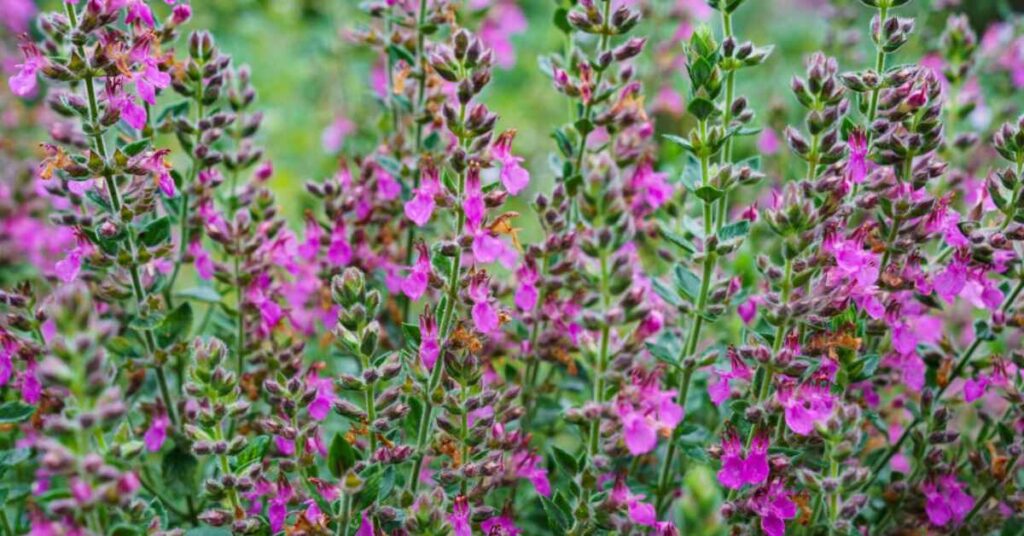
Upright Germander is a perennial herb with small, tubular, red to pink flowers. It is often used as a low hedge or ground cover in herb gardens.
- Watering Needs: Keep the soil consistently moist
- Bloom Color: Small, tubular, red to pink
- Hardiness Zones: 5-9
- Mature Height: 12-18 inches
- Bloom Time: Late spring to early summer
- Sunlight Exposure: Full sun
16. Upstate Trillium (Trillium cuneatum)
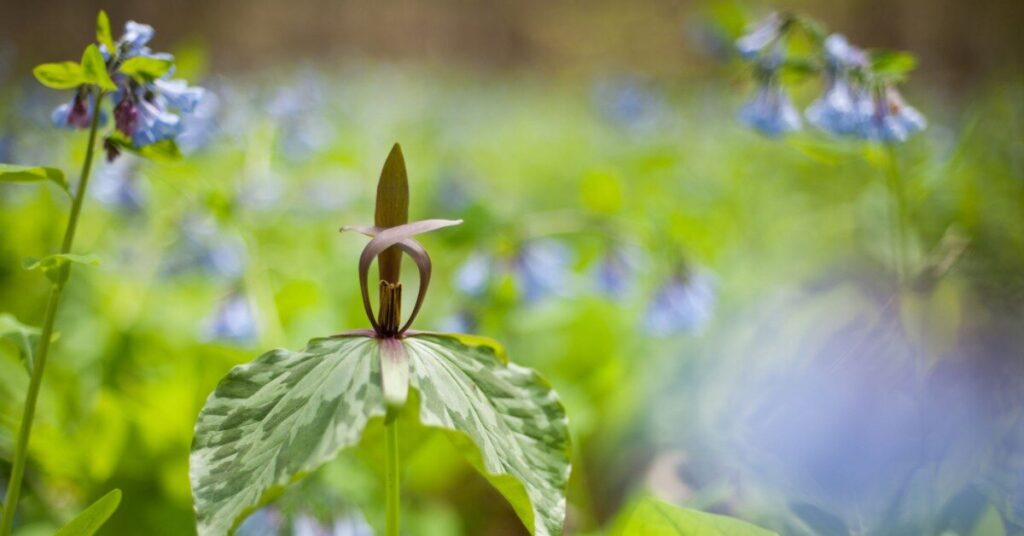
Upstate Trillium is a native wildflower in the eastern United States. It features white to pinkish flowers that have three distinct petals, set above whorled leaves.
- Watering Needs: Keep the soil consistently moist
- Bloom Color: White to pinkish
- Hardiness Zones: 4-8
- Mature Height: 8-18 inches
- Bloom Time: Spring
- Sunlight Exposure: Part shade to full shade
17. Umbrella-Leaf (Diphylleia cymosa)
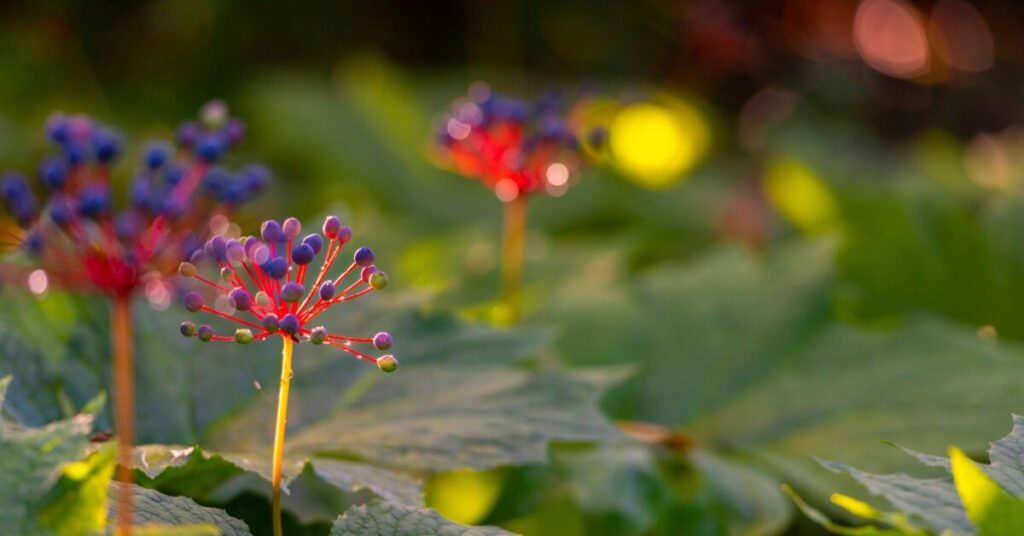
Umbrella-Leaf, also known as American Umbrella Fern, is a native woodland plant in North America. It produces delicate, umbrella-like clusters of small white flowers.
- Watering Needs: Keep the soil consistently moist
- Bloom Color: Small, white
- Hardiness Zones: 4-8
- Mature Height: 1-3 feet
- Bloom Time: Spring
- Sunlight Exposure: Part shade to full shade
18. Upland White Aster (Symphyotrichum weilii)
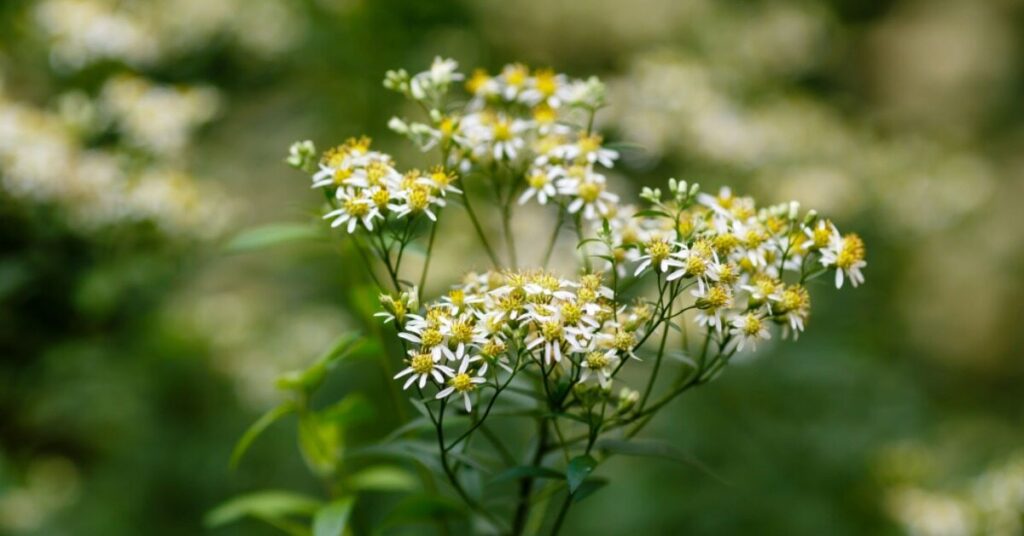
Upland White Aster is a wildflower native to North America. It has daisy-like white flowers with yellow centers and is a favorite of pollinators.
- Watering Needs: Keep the soil consistently moist
- Bloom Color: White with yellow centers
- Hardiness Zones: 4-8
- Mature Height: 2-4 feet
- Bloom Time: Late summer to early fall
- Sunlight Exposure: Full sun to part shade
19. Upland Boneset (Eupatorium sessilifolium)
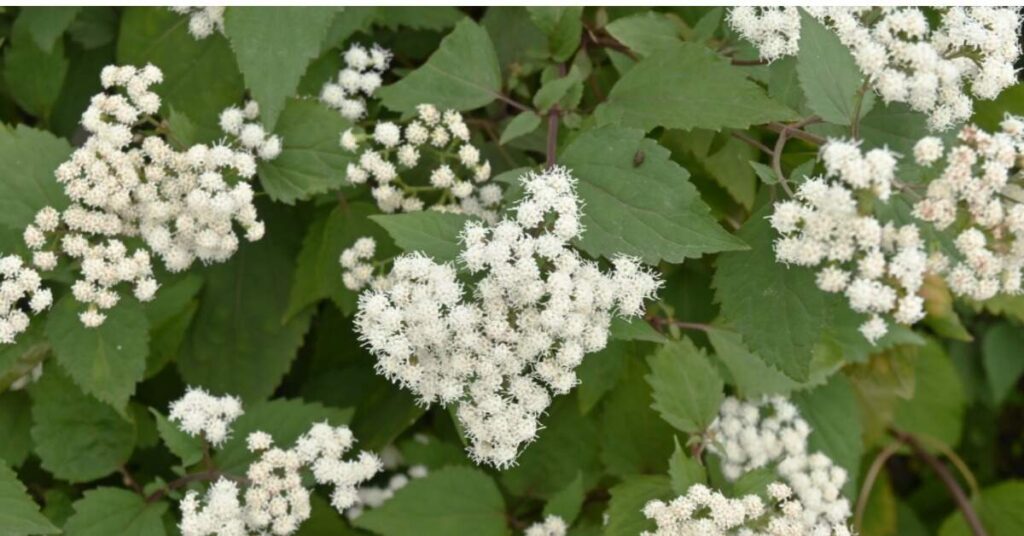
Upland Boneset is a perennial wildflower found in the eastern United States. It bears clusters of small, white, fuzzy flowers and is an important plant for native pollinators.
- Watering Needs: Keep the soil consistently moist
- Bloom Color: Small, white, fuzzy flowers
- Hardiness Zones: 3-8
- Mature Height: 3-6 feet
- Bloom Time: Late summer to early fall
- Sunlight Exposure: Full sun to part shade
20. Umbrella Magnolia (Magnolia tripetala)
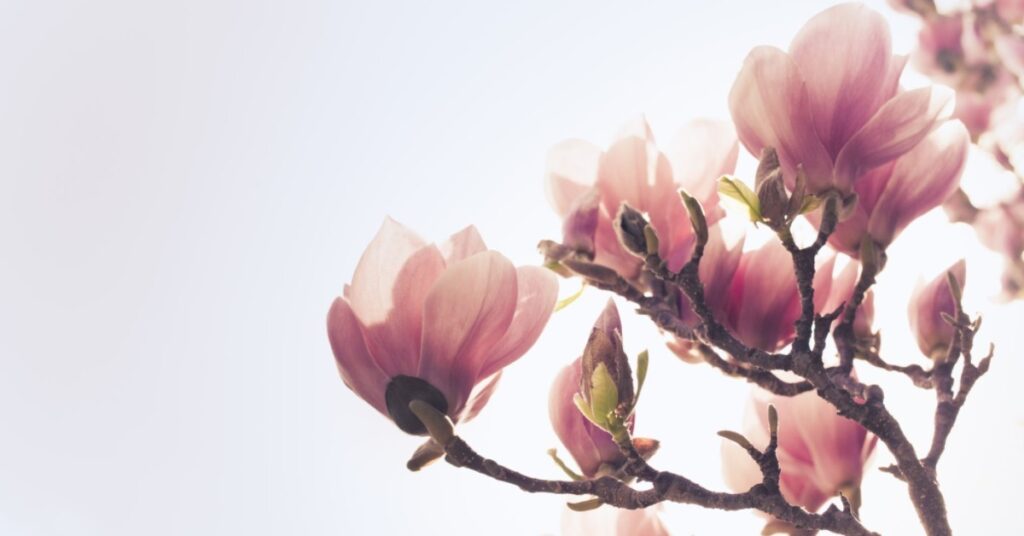
The Umbrella Magnolia is a large, deciduous tree known for its unique, umbrella-shaped leaves. It produces large, fragrant, creamy-white flowers that can be up to 10 inches in diameter.
- Watering Needs: Keep the soil consistently moist
- Bloom Color: Large, creamy-white
- Hardiness Zones: 5-8
- Mature Height: 20-40 feet
- Bloom Time: Spring
- Sunlight Exposure: Part shade to full shade
21. Uinta Basin Hookless Cactus (Sclerocactus wetlandicus)
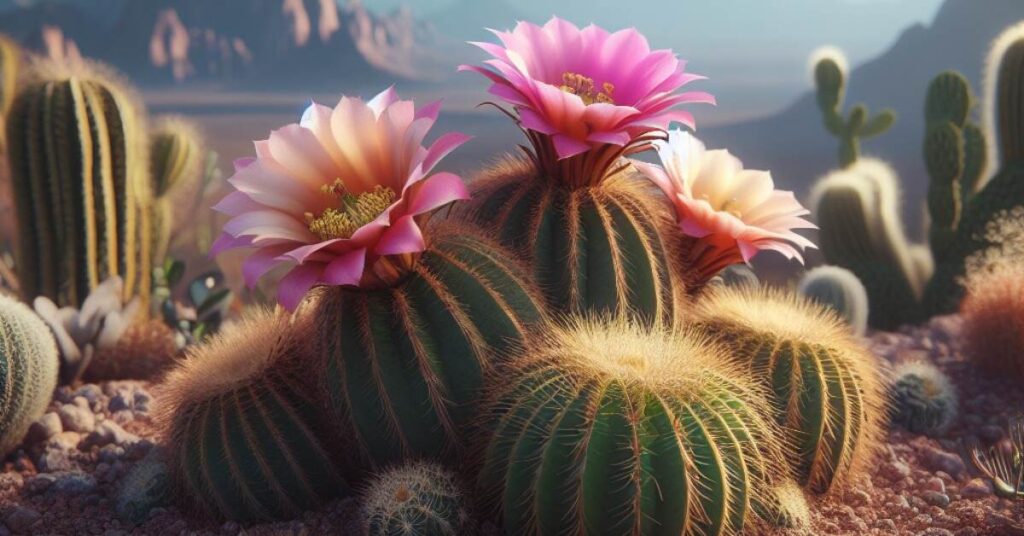
The Uinta Basin hookless cactus is only found in one part of the world, the Uinta Basin in Utah. This is a small and barrel shaped cactus that is adorned with long and thin spines. It blooms in mid spring with beautiful pink flowers, and it works well for areas that do not get a lot of water.
It doesn’t take up much space, it doesn’t need much water, but it does require a lot of sunlight. If you want something beautiful yet intimidating for your garden, this might just be it.
- Type: Cactus
- Water: Low
- Bloom Color: Pink
- Hardiness Zone: 10 – 11
- Bloom Time: Mid Spring
- Mature Height: 6 inches
- Exposure: Full Sun
- Uses: Dry Gardens, Pathways, Indoor Pots
22. Ugly Fruit Flower (Citrus paradisi)
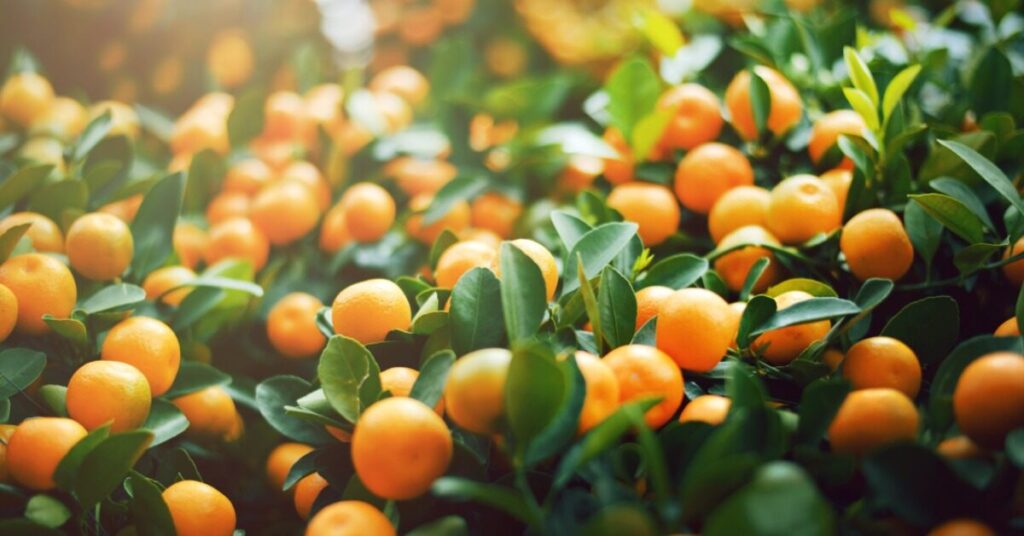
This is a very interesting flower, as it is found on the Jamaican tangelo tree. For those that don’t know, tangelos are a hybrid fruit combination of Tangerines and grapefruits.
The fruit itself has a yellowish green appearance that is very wrinkly on the exterior, hence why they are called the ugly fruit. This tree also produces the ugly fruit flower. As opposed to what the name might imply, it features a beautiful white appearance with four petals and a yellow center, adorned by elongated green leaves.
- Type: Fruit Tree Flower
- Water: Moderate
- Bloom Color: White
- Hardiness Zone: 10 -11
- Bloom Time: Mid Spring
- Mature Height: 25 Feet
- Exposure: Full Sun
- Uses: Fields, Orchards, Centerpieces in Large Gardens
23. Unicorn Plant (Proboscidea parviflora)
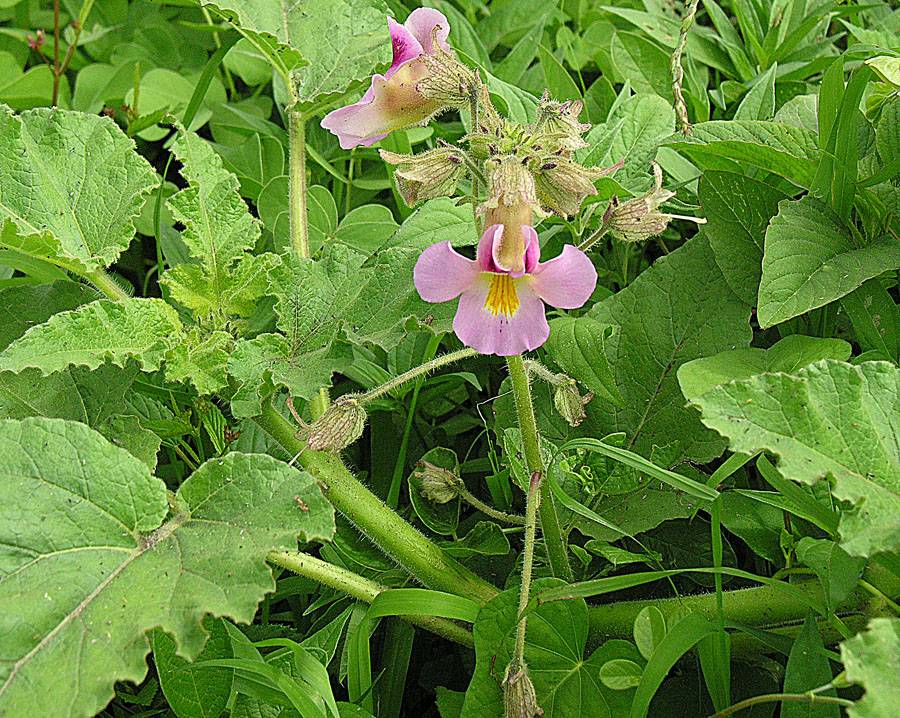
The unicorn plant, also known as devil’s claw, grows very small fruit pods that take the shape of claws. Those little claws are made to hook into animal fur to help with seed dispersal.
These moderate-sized flowers can bloom in several colors, although a combination of white and pink is common, with the flowers being both delicate and intricate. If you need a beautiful and hearty addition to flower beds, this is one of our top recommendations.
- Type: Annual Flower
- Water: Low – Moderate
- Bloom Color: Yellow, Pink, White, Purple
- Hardiness Zone: 6 – 11
- Bloom Time: Spring, Summer, and Fall
- Mature Height: 2 Feet
- Exposure: Full Sunlight
- Uses: Flower Beds, Pathways Liners
24. Upright Prairie Coneflower (Ratibida columnifera)
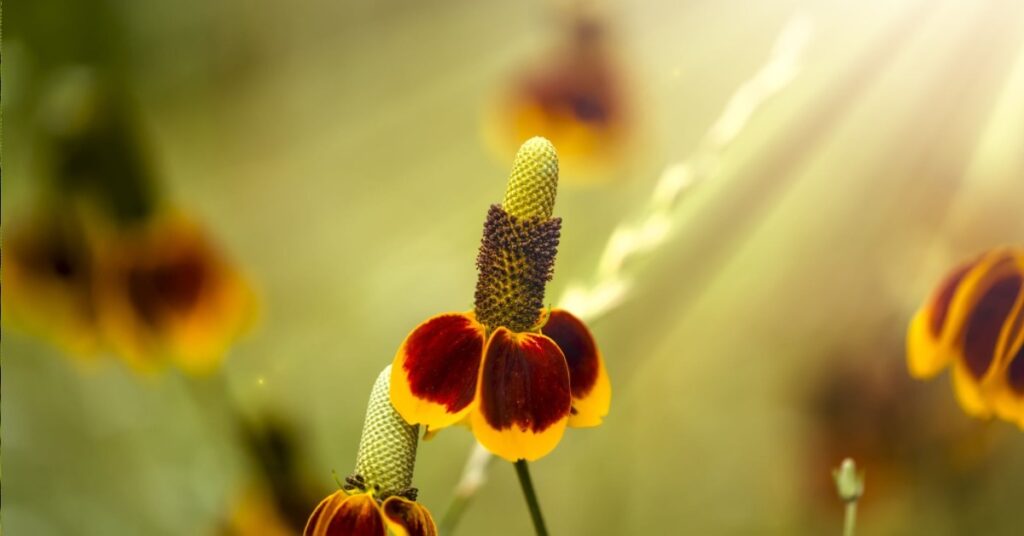
The upright prairie coneflower features pinnate leaves that are deeply cut into segments with the shape of lances, along stems that are alternately branched. Here you’ll see very bright yellow and orange flowers surrounding a brown and columnar shaped central disk. It’s certainly one of the more interesting flowers on the list. Interestingly enough, it serves as a palatable source of nutrition for domestic livestock.
- Type: Herbaceous Perennial
- Water: Low – Moderate
- Bloom Color: Yellow, Orange, Brown
- Hardiness Zone: 4 – 9
- Bloom Time: Late Spring to Early Fall
- Mature Height: 3 Feet
- Exposure: Full Sun
- Uses: Wildflower Gardens
25. Urn Plant (Aechmea fasciata)
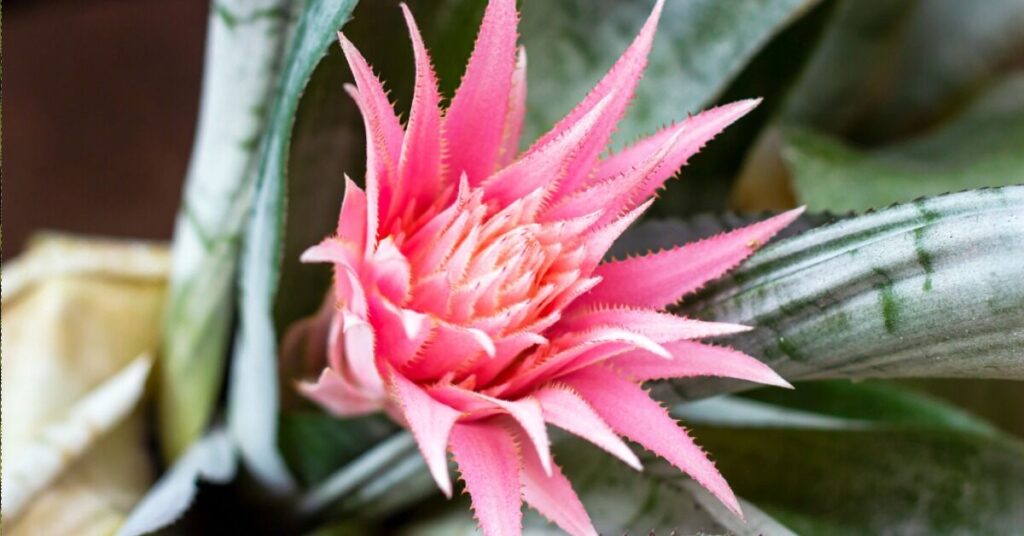
If you like tropical plants, the urn plant bromeliad is a great option to consider, one that is ideal for fairly warm climates. In the wild, it likes to grow on top of other plants where it gets a lot of moisture and nutrients from decaying debris and heavy rainfalls.
The plant itself features absolutely beautiful flowers that are bright pink along with hints of burgundy, red, and purple. The dozens or even hundreds of petals that these flowers have are long, thin, and blade shaped. It looks like a pink ball of spikes and is absolutely mesmerizing. It makes for a fantastic addition to any garden.
- Type: Epiphyte
- Water: Low
- Bloom Color: Pink, Red, Purple, Burgundy, Lavender
- Hardiness Zone: 10 -11
- Bloom Time: Mid-Sumner to Early Winter
- Mature Height: 3 Feet
- Exposure: Partial or Dapples Shade
- Uses: Tropical Gardens, Medicine
